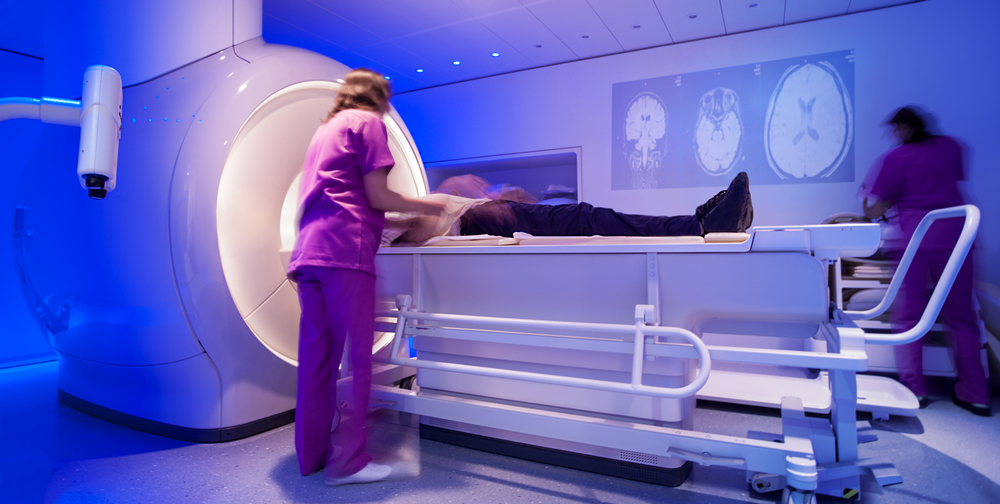Radiologic Technologists in High Demand

AMN Healthcare’s 2022 “Survey of Allied Healthcare Professional New Graduate Hiring Patterns” showed that the position of radiologic technologist has the most unfilled positions.
This finding is part of an AMN report released on October 20. Their results were from 1,005 responses to an email survey sent to healthcare executives/managers of hospital systems, independent hospitals, school districts, laboratories, home health facilities, healthcare professional offices, and other healthcare-related facilities. The AMN survey list comprised current clients, former clients, and non-clients.
Eighty-five (85) percent of the surveyed facilities reported a shortage of allied healthcare professionals — including imaging technologists, laboratory technologists, and therapists.
- A great deal – 34%
- A lot – 21%
- A moderate amount – 30%
- A little – 12%
- Not at all – 3%
When asked about the primary challenges they faced when seeking allied healthcare workers, 80% blamed the current labor shortage.
- 80% – the current labor shortage
- 71% – longer times to fill positions
- 46% – staff burnout
- 45% – quality of candidates
- 33% – high turnover
- 12% – low morale
- 11% – others
Longer lag times between posting job openings and filling them are most likely caused by finding both well-qualified and highly interested candidates. Another major obstacle cited by nearly 50% of facilities was burnout among these allied healthcare professionals.
When asked what types of new allied healthcare graduates they hired, technologists and therapists were most in demand.
- Radiologic technologists – 38%
- Physical therapists – 36%
- Laboratory technologists – 31%
- Occupational therapists – 30%
- Speech-language pathologists – 26%
- Respiratory therapists – 26%
- Other – 13%
Respondents have employed a variety of strategies to address their allied healthcare shortages. Two-thirds are implementing additional hiring incentives. Other strategies include:
- Increasing pay rates – 59%
- Hiring temporary professionals – 59%
- Hiring new graduates – 58%
- Offering tuition reimbursement/scholarships – 37%
- Offering telemedicine – 12%
- Other – 5%
AMN noted that the percentage of temporary staff increased from 25% pre-COVID pandemic to 30% post-COVID-pandemic. AMN Healthcare divisional president Robin Johnson comments,
“The survey suggests that COVID-19 may have caused increased use of temporary allied healthcare professionals. Survey respondents indicated that prior to the pandemic, their allied healthcare professional staffs were composed of 75% permanent staff members and 25% temporary staff members. Now, by contrast, respondents indicate that their allied healthcare professional staffs are 70% composed of permanent staff members and 30% composed of temporary staff members. The fact that close to one-third of healthcare facility staffs are composed of temporary allied healthcare professionals underscores the increasingly mobile nature of the healthcare workforce.”
As facilities hired new graduates, their education levels included:
- Associates in allied education – 51%
- Bachelor in allied health – 50%
- Master in allied health – 40%
- Certification of Specialty – 34%
- Doctorate – 8%
- Other – 4%
Facilities were willing to hire new allied professional graduates with little to no experience.
- None – 21%
- 1-3 months – 56%
- 4-6 months – 9%
- 7-8 months – 2%
- 10-12 months – 11%
- 13-24 months 1%
Over 90% of respondents who hired new graduates were very likely (72%) or somewhat likely (20%) to continue hiring recent graduates. Facilities that responded to being less likely to hire new graduates cited:
Lack of clinical experience:
- Potential inability to practice autonomously, without direct supervision, particularly in the home health field
- Specialty areas like oncology
Training:
- Costs and resources to train new graduates
- Lack of personnel to train/supervise new graduates
- High turnover among new graduates
Licensure
The AMN observes, “Radiologic technologists were first on the list, with 38% of respondents indicating their facilities hired new graduates in this field. This is a clear indication that the volume of diagnostic images such as x-rays, MRIs, and others is rising after being suppressed temporarily by COVID-19. Backlogs of patients requiring imaging tests created by the pandemic, combined with a growing and aging population, are driving the use of diagnostic imaging, which can be delayed or deferred without a sufficient number of radiologic technologists to capture the images. Understaffing can both detract from the quality of care provided by healthcare facilities and the revenue they derive from diagnostic imaging.”